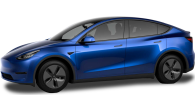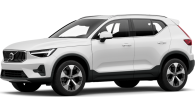You’d be forgiven for mistaking Hyundai’s new generation Santa Fe for some sort of new Land Rover product if it simply drove past you on the road.
It’s instantly eye-catching with its new, much larger, much boxier and off-road suggestive silhouette. It’s also a massive and seemingly unnecessary risk for Hyundai.
The previous Santa Fe was successful. It was a good car which resonated with buyer needs and its relative popularity reflected that.
Rather than iterate on what was a good thing, though, Hyundai has thrown the entire formula in the bin and started over with a distinctive clean-sheet design for the Santa Fe marque.
To top it off, the previous V6 and diesel drivetrains have been replaced with a hybrid-only line-up for its launch.
It could be genius, but it could also spell disaster. Is Hyundai ahead of itself this time around? Read on to find out.
Hyundai Santa FE 2024: Hev (2Wd)
| Engine Type | Turbo 4, 1.6L |
|---|---|
| Fuel Type | Premium Unleaded/Electric |
| Fuel Efficiency | 5.6L/100km (combined) |
| Seating | 7 |
| Price From | $51,150 - $58,850 |
| Safety Rating |
|
Price and features - Does it represent good value for the price? What features does it come with?
8 / 10
As you might imagine with its expanded dimensions and more premium look and feel, the new Santa Fe has climbed up the price ladder, and not by a small amount, either.
The new entry-point, now simply called ‘Santa Fe’ is nearly $10,000 more expensive than the outgoing base model, now starting at $55,500 before on-roads.
It can be chosen in front-wheel drive, or all-wheel drive (which hikes the price to $58,500). From there, the range climbs to $65,000 for the mid-spec AWD-only Elite, and then $75,000 for the top-spec, which dumps the old ‘Highlander’ badge in favour of the new international ‘Calligraphy’ one. It is also all-wheel drive only, but can be chosen with a lavish six-seat interior layout at $75,500.
Helping to simplify things slightly, there is only one powertrain, a familiar 1.6-litre, four-cylinder turbocharged hybrid-electric system.
We’ll talk more about this later in the review, but Hyundai tells us a V6-replacing 2.5-litre turbocharged option will also join the line-up before the end of 2024. Tune back in later to see how it compares.
Equipment is, as usual with Hyundai, stellar, even on the base vehicle, but maybe the best part is you don’t have to feel short-changed buying the entry-spec.
Sure, it only gets cloth seat trim rather than the synthetic or genuine Nappa leather available on the higher grades, but you still get a synthetic leather steering wheel, and the cloth trim has a cool tartan finish, so even it gets some design intrigue.
The wheels also manage to measure 20 inches, you get the complete dual 12.3-inch screen set-up in the interior with wireless Apple CarPlay and Android Auto and dual wireless phone chargers
The only thing missing in terms of core non-luxury appointments is a handful of more advanced autonomous driving features, particularly ‘highway drive assist’. But it still scores all the key necessities when it comes to safety. Check out this part of the review for more.
Stepping up to the Elite adds said autonomous driving features, synthetic leather interior trim, additional power adjust features for the front two seats, integrated sunshades for the rear windows and additional sound deadening via acoustic front glass.
Finally, the top-spec Calligraphy grade adds 20-inch wheels in an alternate design, Nappa leather interior trim with heated and ventilated front seats (plus heating for the outboard second-row seats), a panoramic sunroof, head-up display, digital rear vision mirror and even an ultraviolet sanitising tray in the front dash compartment.
.jpg)
The best value here? I think the Elite is the right balance. It offers the best kit without going overboard on price. That said, the front-wheel drive base model is a lot of car for the money, and somehow you still won’t feel short-changed with the luxury appointments in the Calligraphy despite its relatively tall price.
Rivals include the Nissan Pathfinder (from $54,190) Toyota Kluger (from $54,420), and the outgoing Mazda CX-9 (from $47,600) but none at the entry price are hybrid, and none offer quite the same level of standard equipment.
Design - Is there anything interesting about its design?
9 / 10
You’d have to ask why Hyundai would choose to so radically redesign a successful car, but then I’d argue radical high-quality designs is what Hyundai needs more than ever to compete with an increasing list of low-cost rivals from China.
If it was more of the same, then why pick a Hyundai when you could pick a radical design from its sister brand Kia? Failing that, why not just buy a very competitively priced rival with a more mainstream design from China, like the Chery Tiggo 8 Pro Max?
Here lies the genius behind Hyundai’s crazy new look and more premium direction for the Santa Fe. It grabs eyeballs like nothing else on the road in this class right now.
.jpg)
There are echoes of Land Rover’s Discovery 3 and 4 of course in its side profile, and square face, but I’d argue it’s more elegant homage than straight copy, as particularly evidenced by the very cool H pattern motif which is embedded in the DRL profile, and then repeated in the bumper highlights, and hidden throughout the rest of the car’s bodywork.
The rear three-quarter is the new Santa Fe’s most controversial angle. The low-set rear lights seem to be an endless magnet for controversy. Interestingly though, Hyundai’s product people tell us there was a reason for this seemingly oddball choice.
Apparently placing the rear lights across the tailgate allows the SUV to have a larger overall rear opening, maximising the practicality. It looks odd in pictures but having seen the car now in the metal I find it much more agreeable.
.jpg)
Inside, it’s hard not to make more Land Rover comparisons. The overall tall windowline, boxy seats, and squared-off dash lend the new Santa Fe an adventurous if somehow familiar feel, while the leatherbound steering wheel is quite reminiscent of late 2000s Land Rovers.
The angled climate and utility panel in the centre console looks and feels like more modern British vehicles, although it comes with its own pragmatic Hyundai treatment with plenty of dials to accompany the touch-based shortcuts.
Again, it’s more tasteful homage than straight rip-off, but it’s quite obvious from where the inspiration streams. The premium feel of it will be a big sell for most, but as a huge fan of the boxy Land Rover era from the mid-to-late 2000s, I love this new design direction.
.jpg)

Practicality - How practical is the space inside?
9 / 10
The new Santa Fe has grown in almost every direction. It’s significantly longer and taller than before, although width is identical.
It instantly feels versatile. Big doors join with the high roof and additional length to make access to the first two rows easy, and adjustability is excellent throughout, especially since the second row is on rails and offers various recline angles.
Up front you’re greeted by an airy space, with a commanding view of the road and massive windows. I’d be lying if I said it didn’t remind me of a Land Rover Discovery (in all the good ways), and it feels like a substantial vehicle to helm.
.jpg)
There’s also lots of practical touches to make the most of its huge cabin. The doors offer a large bottle holder and storage tray, with a further two giant bottle holders in the centre console.
The console area itself has benefitted from Hyundai moving the transmission shifter to a stalk-mounted position, which has cleared the space to offer dual wireless chargers and a large pass-through area underneath which is great for larger objects.
There’s also a huge armrest console box (with a false floor and an additional concealed compartment below) as well as a decent-sized glove box on the passenger side and a flip-open tray atop the dash.
.jpg)
Even the cut-away between the two dash sections has a rubberised finish, meaning you can actually use it as a storage area rather than it serving as an aesthetic design flourish.
The screens are huge and easy to use, and Hyundai has committed to maintaining tactile controls for all of the car’s core functions.
You score volume and tuning dials for the multimedia, with separate dials for each of the climate zones on either side of a touch panel which offers shortcut buttons for all the climate functions. Much better than negotiating exclusively with the touchscreen.
.jpg)
There are also plenty of USB-C outlets in the console tray for charging and connectivity, with a 12-volt outlet in the pass-through below.
The rear seat offers plenty of room, with the one caveat being it’s a bit of a climb up into it. The second-row is on rails, so you can adjust to add legroom for third-row occupants or add additional boot space if you’re not maximising space in the second row.
There are all sorts of clever features back there, too. Elite grades and above get built-in sunshades for the rear windows, while the Calligraphy adds heated outboard rear seats.
.jpg)
The trim is comfortable in all cars, and there’s no shortage of practical touches either, like coat hooks built into the rear seat trim (where there’s also the H-pattern motif), dual bottle holders in the doors, with a third one and a storage area in the lower section of the door.
Need more than three bottle holders? There are two more in the drop-down armrest on seven-seat variants. USB-C outlets appear on the backs of the front seats, adjustable air vents are available in the pillars, and there’s a big drawer for extra storage on the back of the centre console.
When I set the second and first row seats to a position comfortable for myself (at 182cm tall), I can fit in the third row in relative comfort. My knees aren’t hard up to the seat in front, and there’s a small amount of room for slipping my feet under the seat in front which lends it a bit of extra space.
.jpg)
Access isn’t the easiest. It’s still a bit of a clamber up into the third row for an adult. The floor is high and the remaining aperture for access is quite small when you slide the second row seat forward or fold it flat.
Once you’re in there, though, there are dual air vents on either side with an independent fan controller, a bottle holder and a storage tray above the wheel arch and a USB-C outlet on either side. There’s even a 12-volt outlet in the boot if you need extra power.
Boot space is great with the third row folded flat at 628 litres, or 1949 litres with the second row folded flat. Hyundai does not offer a figure for the space when the third row is up, but like most SUVs in this class, it’s not much. Stay tuned on a future test for more.
Underneath the boot (outside the car) there’s even a full-size spare wheel, great for those longer trips.
Drivetrain - What are the key stats for the drivetrain?
7 / 10
Powering the new Santa Fe is just one engine, a 1.6-litre four-cylinder turbo-petrol unit in a hybrid set-up, mated to a six-speed automatic transmission.
The transmission blends the power sources via a single-clutch system rather than a transaxle like some hybrids. It’s in the name of efficiency, and unlike most clutch-based transmissions, this one is a recently-updated version with a new and more powerful electric motor, and it’s nice and smooth from a take-off, too.
.jpg)
The combined power of this system sounds reasonable at 172kW/367Nm, but for a vehicle which weighs 1990kg, I’d describe performance as adequate.
The other downside is limited towing performance. While the design of this new car might suggest it’s ideal for open road touring with a big trailer in tow, the maximum braked towing capacity is 1650kg, well short of the 3500kg you might expect from a ladder-frame rival.
Efficiency - How much energy does it consume?
8 / 10
The upside of this compact hybrid electric system is, of course, fuel efficiency. This big SUV has an official combined cycle fuel consumption figure of just 5.6L/100km, regardless of whether you pick a front- or all-wheel drive, and as an added bonus it’s even capable of consuming entry-level 91 RON unleaded.
On our drive program we saw between 6.5L/100km and about 8.0L/100km across several vehicles, which tells me the number you’ll see in the real world will vary depending on driving conditions significantly, but we’ll get the car back for a longer test in the future to investigate further.
The large 67-litre fuel tank suggests a cruising range (at the official consumption rate) of over 1000km.
Driving - What's it like to drive?
8 / 10
This new Santa Fe feels nothing like the outgoing vehicle. It feels bigger, tougher, and more capable, and this starts with the awesome seating position and towering view over the road.
It’s easy to see out the side and rear of this car thanks to its huge windows and well-sized mirrors and the seats proved comfortable in all trims over a longer drive.
The steering feels nice and connected, which is good because some of Hyundai’s recent offerings have had a quite artificial, overly-electrically-assisted tinge to them, and acceleration off the line is decent thanks to the upsized electric motor (now producing 44.2kW/264Nm on its own) providing an instant kick.
The response from the small engine isn’t as robust for overtaking manoeuvres above 80km/h, and this is where you miss the old V6.
.jpg)
Still, those looking for a bit more punch will be able to select the 2.5-litre turbo version before the year ends, just don’t expect the same fuel-sipping performance.
The brand tells us it is no longer running the same local ride and handling program which once did wonders to set it apart from rivals, saying instead the learnings from the Australian division are now part of the global ride and handling settings. The Australian market also has a regionally-specific damper setting selected from the factory.
It may as well be a locally-tuned car. The ride and handling of this new Santa Fe is excellent.
Yes, it’s a little disconcerting cornering hard in such an upright-feeling vehicle, but ultimately the SUV takes corners in its stride and shrugs off bumps and undulations with ease. Even the corrugated surface of a gravel track is reasonably filtered-out.
.jpg)
It particularly feels planted on the road. Yes, it’s heavy, but it’s hard to tell this is a front-biased layout as it’s so confident and grippy on the tarmac. You can feel the all-wheel drive system work its magic on unsealed stuff, but this is a safe feeling car on the road.
We didn’t have a chance to take it on anything particularly challenging off the road, nor did we tow with it, so you may want to tune in again for a future review where we get to experience more of its capabilities.
For general driving duties, though, this is an impressive large SUV. Calm, confident, comfortable, quiet and efficient.
Warranty & Safety Rating
Safety - What safety equipment is fitted? What safety rating? 8/10
8 / 10
Almost every active safety tick-box is ticked here, even on the entry-level Santa Fe, with the key missing feature for the base car being the semi-autonomous ‘highway driving assist’ features including distance and lane following control, as well as lane change assist - so basically a more advanced adaptive cruise. The base car also misses out on the clever (but slow) remote parking feature.
Otherwise the new Santa Fe has an array of 10 airbags, with the curtain set extending far enough to cover the third row. At the time of writing, it was yet to be rated by ANCAP.
The real shame is some of the active safety items are still intrusive and annoying. Particularly the traffic sign recognition - which routinely picks up the wrong speed from the back of buses and inactive school zones, and the driver attention alert, which frequently chastises you for looking even slightly away from the road to adjust something on the touchscreen. It’s a shame because it only serves to tarnish an otherwise excellent drive experience.
Ownership - What does it cost to own? What warranty is offered?
8 / 10
As usual, the new Santa Fe range is covered by Hyundai’s five-year and unlimited kilometre warranty, which is accompanied by five years of roadside assist (and beyond if you continue to service with the brand), and matching capped price servicing program.
Servicing is required once every 12 months or 10,000 kilometres, and averages out to $481 annually for the first five years. Not Toyota cheap, but not bad.
.jpg)
Verdict
It might be more expensive than before, but somehow this new and radically redesigned Santa Fe still feels like a lot of car for the money. It looks awesome, it’s nice to drive, and it has a premium-feeling, versatile cabin.
The only thing you might want to keep in mind is this hybrid version in particular doesn’t quite have the same towing, performance, and possibly off-road abilities its tough new design might suggest.
Our pick? Hyundai reckons most of the sales will go to the top-spec Calligraphy, but the right money is the Elite. It offers the best balance of price and equipment in the range.
Note: CarsGuide attended this event as a guest of the manufacturer, with accommodation and meals provided.
Pricing Guides





























.jpg)
.jpg)
.jpg)
.jpg)

.jpg)
.jpg)


.png)




.png)





.png)
















.jpg)

.jpg)